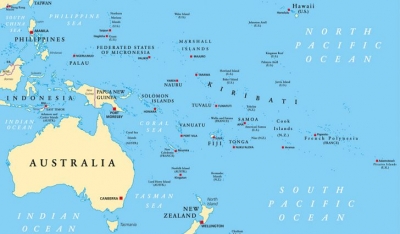
A part from a long range of mountains running down its eastern side, most of Australia is flat, hot and dry. It is rich in natural resources such as coal and minerals including gold, copper and iron. The vast interior, or outback, is mostly desert, or dry scrublands. To the east, this gives way to open grassland – stock-raising country, where Australia’s sheep and cattle ranches, or “stations”, are situated. With its millions of sheep, Australia is the world’s largest producer of wool.
Most Australians live around the coasts, where the climate is cooler and the land fertile. Crops such as wheat and tropical fruits are grown for export, and vineyards produce world-famous wines. A high proportion of people live in the largest cities, such as Sydney, Brisbane and Melbourne. The cities have modern manufacturing industries.
About 200 years ago, the British and other Europeans began to arrive on the shores of Australia. They routed many of the native Australians already living there, and seized their land. Today, much of Australia’s population is of European descent, although there are substantial numbers of immigrants from Asia. The small numbers of native Australians that remain are working to reclaim some of their land and sacred sites.
NEW ZEALAND
Like its neighbour, Australia, New Zealand is a prosperous country. It farms huge numbers of cattle and sheep, producing large quantities of wool, meat and dairy products for export. Its fertile land and warm climate also make it ideal for vineyards and fruit and vegetables. The power of New Zealand’s many rivers, and also the underground heat from volcanic activity on North Island, are harnessed through non-polluting electricity schemes.
The native peoples of New Zealand are the Maoris, who originally came from Polynesia. They still make up about nine per cent of the population, and have retained much of their culture and traditions.
Picture Credit : Google





